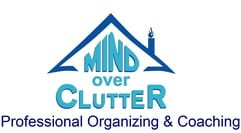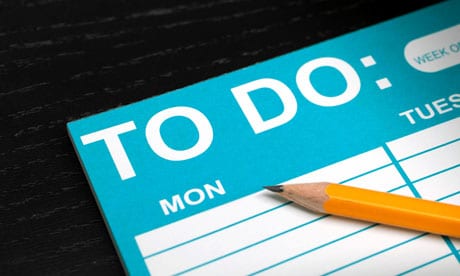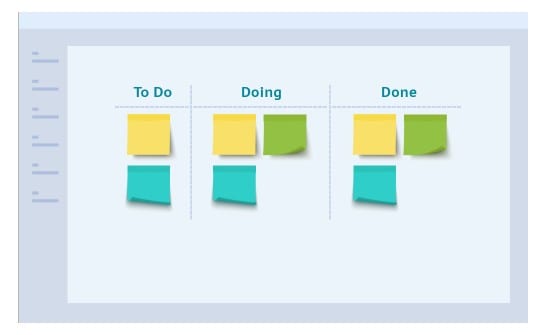11 Tips for organizing your lists
Do you spend valuable time making a to-do list and it doesn’t seem to help you get anything done? Does that list keep getting longer and longer? There are many ways to keep track of tasks you need to complete. Bullet Journaling, apps, notebooks, lists or recording a list on your phone. No matter how you record your list here are some tips to help you become more productive.
11 To-Do List Tips
These suggestions are from “Don’t Agonize, Organize Your Office” by Diane A. Hatcher.
- Make an Action list, Today’s Goals list or give it a title that motivates you.
- Make a tomorrow’s list before you finish your day throw out the old list and start fresh daily.
- Lists help you to focus and this increases productivity.
- For lists or calendars to help you be more productive you need to use them consistently.
- Write down anything on your list you don’t want to forget and cross off items as they are completed to help you achieve a sense of satisfaction.
- If a list is longer than 10 items focus on priorities and meeting due dates.
- Record individual tasks on your list, not projects.
- Look at the list often and keep it visible in the same location every day.
- Double the amount of time you think each task will take to prevent over scheduling.
- Use one calendar to record all your appointments, due dates and deadlines. Refer to the calendar when you prepare the action list for the next day.
- Prioritize by time blocks. Choose tasks off your list that can be accomplished in the time you have at hand. Also, consider your energy level when you are selecting the task to complete.
Kanban System
What happens if your list has more than 10 items and you’re afraid you will forget something if it is not on the list? There is a Japanese system called Kanban. This is a good system for visual people and for projects.
- Place your list of items you don’t want to forget about in the To-Do column
- You pick 3 tasks you will be working on at any one time and move them to the doing column.
- You can only add a task from the To-Do column to the Doing column when you complete one.
- Using Post-its on a whiteboard, arrange in columns: “To-Do”, “Doing”, and “Done”. There should never be more than three notes in “Doing”.
- You can add a “Waiting” column if you are waiting for other people to send you information.
Let me give you an example. During the pandemic when my area has a stay at home order, and lockdown, I work on my new online course, Create an Organized Home. At the beginning of the project, all of these items were in the To-Do column, I picked items to work on and moved them to the Doing column and as they are completed they are moved to the Done column. The nice thing about the Done column is I can check and see if I missed something and put it in my To-Do Column.
To-Do Doing Done
Update my website Proofread the material Learn to write a course
Market my course Check settings Write the course
Add SEO to each page Find the best software
Determine price Put course on software
Release course Make videos
Your To-Do column is a holding area for all those things you need to get done not just related to one project as in my example. The Doing column is the high priority items to work on that day. The Done column lets you know you are meeting your deadlines and gives you a sense of accomplishment. Using this system you don’t need to keep rewriting your list. Move the Post-it note from one column to the next.
However, you structure your list you can only do a small number of tasks at once. Whether it is a list on paper, a digital list, a journal or post-it notes, set your priorities for the day, work on them first so you don’t get distracted by less important tasks and refer to your list frequently.
Let me know in the comments how you structure your To-Do lists.
 Julie Stobbe is a Trained Professional Organizer and Lifestyle Organizing Coach who brings happiness to homes and organization to offices, coaching you virtually using Zoom. She has been working with clients since 2006 to provide customized organizing solutions to suit their individual needs and situations. She uses her love of teaching to reduce clutter, in your home and office. She guides and supports you in managing your time. If you’re in a difficult transition Julie can coach you to break-free of emotional clutter constraining you from living life on your terms. Online courses are available to help instruct, coach and support your organizing projects. Get started by downloading Tips for Reorganizing 9 Rooms.
Julie Stobbe is a Trained Professional Organizer and Lifestyle Organizing Coach who brings happiness to homes and organization to offices, coaching you virtually using Zoom. She has been working with clients since 2006 to provide customized organizing solutions to suit their individual needs and situations. She uses her love of teaching to reduce clutter, in your home and office. She guides and supports you in managing your time. If you’re in a difficult transition Julie can coach you to break-free of emotional clutter constraining you from living life on your terms. Online courses are available to help instruct, coach and support your organizing projects. Get started by downloading Tips for Reorganizing 9 Rooms.
Contact her at julie@mindoverclutter.ca
X – Facebook – Facebook group Organizing Mind and Space





I do most of the things that you suggest here. I keep a planner which holds both my calendar and my to-do list. That way, each list is attached to a day. Yes, it means I carry a somewhat bulky item, but it works so well for me that I don’t want to change my approach. This system allows me to schedule tasks onto a day well in the future if I wish. By having a list for each day, I know exactly what the priorities are for any given day, and I usually avoid putting too much on one day.
I work very similarly to you. I can plan easily for each day a week in advance and a month and quickly see how busy each and month will be.
I’d never had a name for the kanban system before. You know I LOVE productivity ideas so obviously, I must try this one immediately, hahaha. I was talking to a friend about trying out some new systems. She’s attempted block scheduling and found it to be too granular. This system could be tweaked and useful to help her simplify. I’m going to give it some thought and try it out with her.
Let me know how it works with her. Today my to-do list didn’t get finished. Some tasks don’t have a specific deadline. I was tired of continually rewriting them to the next day. I thought the kanban system would be good for this situation.
Julie, I make my list every night for the next day. This is something that has worked for me forever. I also use a planner pad and have categories of things I want to do during the week listed and funnel them into the day. I carry this with me to all my appointments. I like the idea of the Kanban system and will share it with clients.
I also make my lists the night before. On Sunday night I put items that need to be done that week into an appropriate day and then schedule them when I make my list the night before. If it is a task for the following week or later it stays in a folder that I check at the beginning of each week. My system of daily, weekly and monthly scheduling works very well for me but clients find it too complicated because you need to look at a file each week to see what needs to happen and then at the beginning of a month look at a monthly file and decide which week you are going to do a task. If they can use post-it notes and always see the tasks they never need to remember to look into a file. I think it could work for them.
I have been looking to revamp my ‘to-do list’ for a while. I’m not one for having a digital one but I do love the concept of Kanban. It is new to me so I will be exploring it this week to see if it is the one for me.
Great Suggestions!!!
I don’t use a digital to-do because the minute I start to “trust it” is when a tech issue happens and I can’t get the information I need. I also like to have a paper copy of some things because it makes getting the task done quicker than if it is in a digital format somewhere in a folder on my laptop. Let me know how well the Kanban system works for you.
So many great ideas here, from the to-do list tips from Diane Hatcher’s book to the very visual/tactile Kanban sticky note system. Several years ago, I switched my to-do system to use the “2Do” app. I LOVE it! It allows me to set a task or to-do item on a particular day and color-code it by category. When I open it up to review my day, the items scheduled are there to see. I have the ability to put things on repeat (by day, week, or customized sequences.) It also pulls in my calendar to view the list while also viewing scheduled appointments for a given day.
It also gives me has list-making abilities that go beyond the daily to-do list. At this point, I don’t know how I functioned without it.
Thanks for the suggestion and the review of the 2DO app. I love learning about more tools from people who have used them successfully.
Great wisdom here, both from Diane and from you, Julie. And I absolutely love how Kanban, whether on sticky-notes on the wall or in Trello boards, gives you a visual sense of all your obligations but lets you focus on just what you’re DOING now and then lets you revel in what you accomplished (DONE).
I’ve tried using list-making apps, but I always come back to having one brightly colored sticky note with the day’s tasks. I don’t have trouble remembering my short/medium-term “to do” items enough to need the kanban or a master list, but I do use Trello to categorize all of my longer-term and “someday” tasks with boards for all the apps and software I want to learn how to use (or use better) and boards for all of the writing projects I might do “someday.”
Great ideas for moving us forward!
I always encourage clients to do a brain dump and get all their to-dos, appointments, projects written down. Once they relieve their brain of “not forgetting” they become less overwhelmed. Trello seems to be a good tool for that. Thanks for sharing your system and ideas with me.
I love Kanban and have several clients it’s worked really well for. One in particular has a huge whiteboard they use to be able to contain ALL their tasks, from household to personal to business. It’s a way for them to tame the overwhelm of a brain dump, as you point out here.